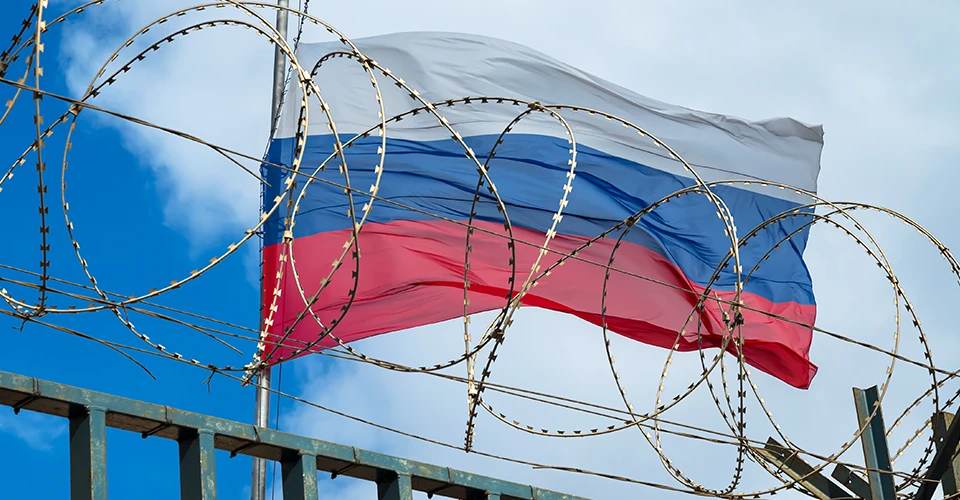
Western tech curbs slow Russian drones, yet weapons output surges
Despite issues with malfunctioning drones, Western efforts to block Russia’s access to key technology have had limited success. Yet, through covert operations and support from allies, Russia’s weapons production continues to surge
The Washington Post reported on the issue.
Earlier this year, Ukrainian air defense crews noticed an anomaly with Russia's Geran-2 one-way attack drones. The latest models would often malfunction during sharp turns, spinning out of control. While some crashed harmlessly, others leveled off, becoming easy targets for air defense systems. Despite these failures, the drones kept coming in large numbers, with some days seeing up to 100 launched at once.
The increased failure rate was linked to inferior components, particularly a small steering motor, as Russia switched to a Chinese motor after Western sanctions blocked access to Western technology.
“The defective drones marked a small win for Western countries in an ongoing shadow conflict - waged in part by spy agencies - to deny Moscow access to the high-tech components needed for modern weapons of war,” the outlet noted.
Three years of sanctions have weakened Russia’s war machine, forcing it to use outdated equipment and compromise on quality, U.S. officials say. However, Russia still obtains critical Western parts through covert means and buys others from China. Despite this, its forces continue to gain ground through numerical advantage, minimizing the sanctions' battlefield impact.
“There are so many of their drones that you can’t even lift your head,” retired Gen. Ihor Romanenko, former chief of the general staff of the Ukrainian army, said in an interview. “Despite the deterioration in the quality of Russian weapons, it doesn’t have a significant impact. They achieve results through sheer mass deployment.”
Since Russia's 2022 invasion, sanctions have targeted its economy, oil and banking sectors, and blocked access to critical Western components needed for weapons, including advanced avionics, computer chips, and sensors for drones and missiles. In practice, efforts to block Russia’s access to Western parts have become a struggle by intelligence agencies and the Treasury Department to dismantle smuggling routes.
“Success is measured in tanks and missiles that fail to hit their targets, and drones that cannot fly,” Western analysts say.
But the Kremlin is countering sanctions by using intelligence agencies, smugglers, and criminal networks, while increasingly relying on China, Iran, and India for substitute Western parts.
“Even as more Geran-2s fail to reach their targets, Russia’s arms factories are managing to produce more of them, and at higher rates,” the publication noted.
Max Bergmann, director of the Europe, Russia, and Eurasia Program at the Center for Strategic and International Studies, noted that while Russia may bypass sanctions, it faces added costs. However, he warned that Russia is relying on sheer numbers to compensate for any flaws in its weapons systems, continuing to send troops and weapons into Ukraine despite heavy losses, and recently reinforcing its forces with North Korean troops.
“Quantity has its own quality,” Bergmann said.
Experts argue that despite the extensive sanctions, Western governments have struggled to get Russia's neighbors and trading partners to fully comply, allowing widespread circumvention. Additionally, NATO has been slow to identify and target key vulnerabilities in Russia's defense industry.
“Russia lost almost all of its machine tool industry after the Cold War, and it can’t even make AK-47s without this technology,” said Kristofer Harrison, president of DKP, a Virginia-based nonprofit that tracks illicit networks linked to Russia and other authoritarian regimes. “We don’t need to mollify Russia by sacrificing Ukrainians. We just need to deny them the technology to cut metal.”
Spy battles
On Aug. 1, following a historic prisoner exchange between Moscow and the United States along with four European nations, a plane landed at Moscow’s Vnukovo International Airport carrying 10 freed Russian nationals, including alleged spies and a convicted hitman.
Among them was Vadim Konoshchenok, a 50-year-old accused of smuggling electronic circuits and rifle ammunition into Russia. Extradited from Estonia in 2023 and jailed in the U.S., Konoshchenok was released as part of the swap, receiving a red-carpet welcome and a personal greeting from Russian leader Vladimir Putin.
U.S. officials, however, claim he was no ordinary smuggler, but an operative for the FSB, involved in a network tasked with acquiring Western-made military hardware and components crucial to Russia’s war in Ukraine.
Konoshchenok denied working for Russian intelligence and claimed Moscow did not request his return in the prisoner swap. “For years, I have had my own business, and I have no connection to the Russian military or the Russian defense agencies,” he said.
Since the invasion, both the FSB and its military intelligence counterpart, the GRU, have assumed greater responsibility for overseeing the procurement of foreign components, U.S. officials say.
“At the highest levels, their intelligence services are giving direction to sanctions-busting operations,” Deputy Treasury Secretary Wally Adeyemo said in an interview. “This is not being done by the private sector in Russia. It’s being directed by the government to make sure they are acquiring the things they need to build the weapons they want.”
Jamming gears
Western officials work to disrupt smugglers' networks, aiming to delay supply chains and drive up costs for Russia, though completely blocking illicit trafficking remains impossible, especially in uncooperative countries like China.
“Ultimately, what we’re trying to do is to put some friction in their illicit procurement networks,” said Adeyemo, the deputy treasury secretary.
Even before Russia's invasion of Ukraine in February 2022, U.S. intelligence was mapping Moscow's military supply chains, pinpointing vulnerabilities. After the war began, analysts dissected captured Russian weapons to trace key components back to their sources. The investigative effort is ongoing, U.S. officials say, yielding a continuous stream of sanctions as well as criminal indictments.
Despite sanctions, Western components and increasing Chinese substitutes still reach Russia. Studies of captured weapons reveal the ongoing use of Western electronics in Russian tanks, missiles, and aircraft, while China plays a growing role as a supplier. Trade data from Kyiv-based nonprofit Trap Aggressor shows Chinese firms provided $28 million in drones and parts to Russia from early 2023 to mid-2024.
Sanctions experts suggest targeting Russia's defense industry beyond electronics, focusing on challenges like artillery shell production and durable tank barrels. Moscow is relying on parts from Soviet-era tanks and howitzers, but satellite images show these reserves are quickly running out, says George Barros of the Institute for the Study of War.
Key products for modern militaries, like computerized machine tools and high-performance lubricants, remain hard for Russia to source outside the West. U.S. and European firms dominate these industries, and while Russia has vast petroleum reserves, its capacity to produce refined lubricants for engines is limited, says Andrew Fink, a senior Russia analyst for Exovera, a data and research firm based in Northern Virginia.
“Russia is a raw materials superpower, yet it has serious industrial weaknesses, and advanced machines tools and chemical precursors are two important ones,” Fink said. “With lubricant additives, I’m sure that some Russian PhDs with enough money can make these chemicals on their own in small quantities. But can they come up with thousands of tons a month? That requires a kind of capacity that Russia does not have.”
More Drones, More Defects?
Measuring success in the sanctions war is challenging, but U.S. officials find encouragement in reports of malfunctioning Russian weapons, like the crashing Geran-2 drones.
Ukrainian analysts and experts from the U.K.-based Royal United Services Institute observed a higher failure rate in Russian drones, particularly the Geran-2 model. They traced the issue to a small mechanical device known as a servomotor, which regulates the drone’s flight movements. The problem arose after the manufacturer switched to a Chinese-made servomotor, replacing the South Korean component that Russia had previously used but could no longer easily acquire due to sanctions.
Evidence of the sanctions' impact is visible in Russia's newest T-90M battle tanks, which are being produced without a crucial muzzle reference sensor. This laser-guided device, vital for accurate firing, began disappearing from tanks late last year, according to military analyst Michael Gjerstad.
Jack Watling, a senior researcher at the Royal United Services Institute, said such examples are typical of the “attritional effect” that sanctions fundamentally have. Slowly, and over time, sanctions will collectively degrade Russian production capacity, Watling said.
“But they haven’t had a decisive effect,” he said. “And they’re unlikely to have a decisive effect.”
Ukrainian officials say the higher failure rate of Geran-2 drones has become less important amid a surge in Russian drone attacks. In October, Moscow launched over 2,000 Geran-2 drones, many still containing Western components, as noted by President Zelenskyy.
“Such a massive number of [Geran-2s] requires over 170,000 individual components that should have been blocked from reaching Russia,” he said. “They come from companies in China, Europe, and America - lots of small but constant contributions to Russia’s terror.”
- News












































